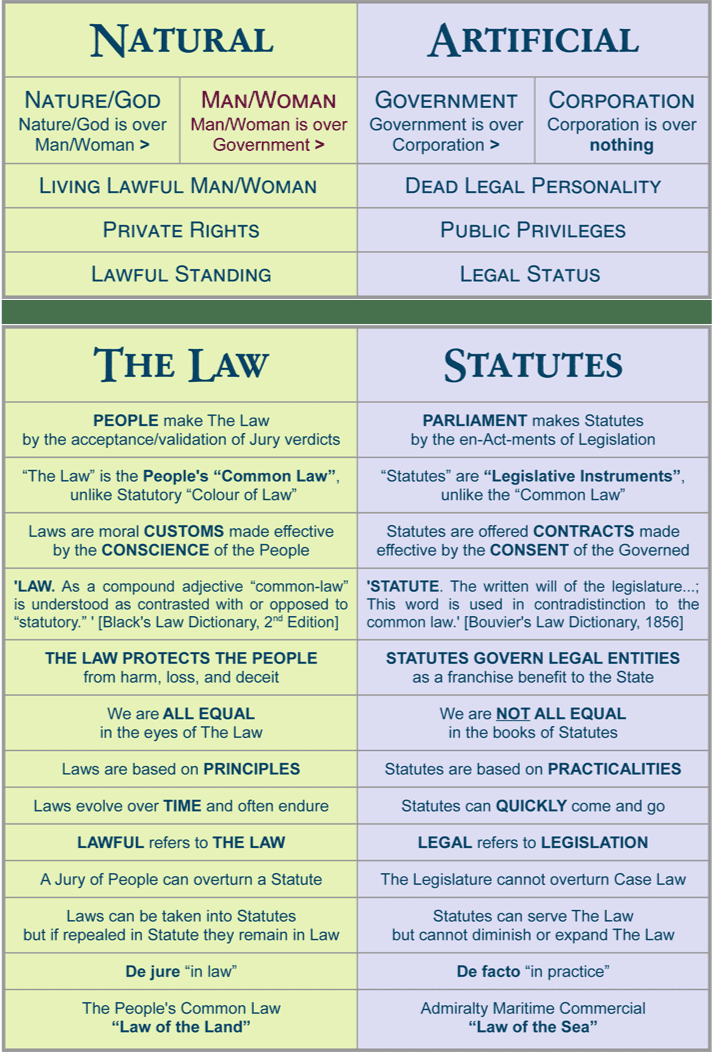LESSON 2: Natural & Artificial
One of the most important aspects of jurisdiction is the recognition of the fundamental difference between what is natural versus artificial, and, what is physical versus fictional.
In this context, the most significant and influential construct is law. There are many other constructs such as artificial (manmade) private houses on the natural soil, artificial factory buildings on the land, artificial cargo ships on the natural seas, artificial airplanes in the natural air, and so on. These are easy to understand since they are all physical in nature. Laws on the other hand are non-physical and purely conceptual, they are intellectual constructs of the mind. These characteristics make laws somewhat more difficult of clear understanding.
Two Fundamental Jurisdictional Law Systems
When viewed systematically our technique of artificial jurisdictional boundaries and laws conforms to the Divine Plan of the Cosmos when used properly with boundaries that are permanent and don’t change much, and adaptable laws that can change if necessary.
There is a fundamental split in law as it relates to the natural and the artificial. On the natural side law is public and lawful, and serves to protect private rights, and is known as The Law. On the artificial side it is private and legal, and serves to protect public privileges, and is known as Statutes (such as codes, canons, charters, contracts, legislation).
The following chart explains this fundamental split in law.
Note: Because of this fundamental split of the law construct into two distinct systems, there develops a need for an interface between the two. This interface is needed for dealing with the differences that invariably arise between the two systems. This interface will be discussed in LESSON 7.


